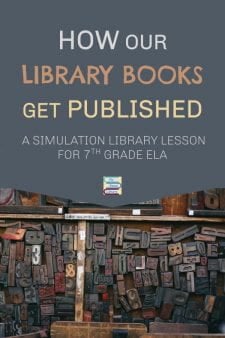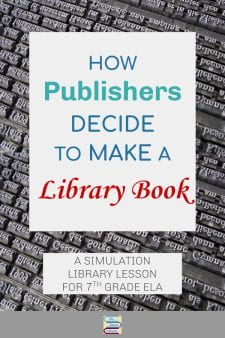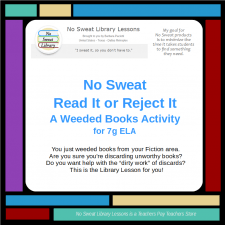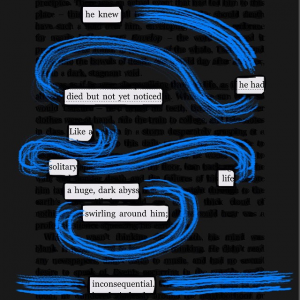 In December and January I weed our Fiction book area, pulling outdated or low circulation books. By February or March I’ve accumulated quite a few weeded books intended for discard. Like every School Librarian, the reader in me hates to simply trash a bunch of books—we always try to figure out some way to use them. I’ve tried various weeded books activities shared by librarian bloggers or listserv members, but most of them don’t give students a meaningful and authentic experience.
In December and January I weed our Fiction book area, pulling outdated or low circulation books. By February or March I’ve accumulated quite a few weeded books intended for discard. Like every School Librarian, the reader in me hates to simply trash a bunch of books—we always try to figure out some way to use them. I’ve tried various weeded books activities shared by librarian bloggers or listserv members, but most of them don’t give students a meaningful and authentic experience.
I want to be sure non-circulating weeded Fiction books should be discarded, or if they just need some promotion for students to check them out. When my daughter was submitting her books for publication, I realized I could make a lesson about how books are published so we can put them on our school library shelves, and use the weeded books to go through the process.
I created a 2-visit Library Lesson that uses weeded Fiction books with 7th grade English Language Arts classes. It’s a simulation that gives students a look into the world of literary book publishing, and both students and teachers enjoy it.
LIBRARY VISIT #1: READ IT OR REJECT IT
 The first visit is called “Read It or Reject It.” I explain that Literary Agents require a book proposal to follow certain guidelines to decide whether an author should submit the manuscript for possible publication. For our lesson, students will act as “Literary Agents” using criteria I provide on the student worksheet at their tables.
The first visit is called “Read It or Reject It.” I explain that Literary Agents require a book proposal to follow certain guidelines to decide whether an author should submit the manuscript for possible publication. For our lesson, students will act as “Literary Agents” using criteria I provide on the student worksheet at their tables.
Students take notes for the 4 books at their table and discuss whether the ‘manuscripts’ might be worth reading, then after a few minutes they rotate to another table and repeat the process for 4 different books. Seventh graders love to talk, so they enjoy discussing whether a book is “good enough to read.”
At the end of the activity, these student “Literary Agents” choose one ‘manuscript’ (book) from a table to check out and “Read It” over the next couple weeks. It can be one they discussed or a different one. (Or they can choose a book from the Fiction area.) The worksheet is turned in to the teacher for a daily grade, and students receive a Book Response bookmark at checkout to take notes during their reading.
Each period I set out another batch of weeded books. By the end of a full day of class visits, I know that any weeded book left on a table is a “Reject It”—these books were completely uninspiring and need to be discarded.
LIBRARY VISIT #2: KEEP IT OR TRASH IT
 Two weeks later, students return for “Loved It=Keep It or Loathed It=Trash It.” I check in all the books, but give them back to students to use for the lesson. I explain that students who LOVED their book and believe we should KEEP IT will use entries on their Book Response bookmark to “sell” their book to a publisher—that is, they need to make other students want to read it, too. They choose one of 3 options:
Two weeks later, students return for “Loved It=Keep It or Loathed It=Trash It.” I check in all the books, but give them back to students to use for the lesson. I explain that students who LOVED their book and believe we should KEEP IT will use entries on their Book Response bookmark to “sell” their book to a publisher—that is, they need to make other students want to read it, too. They choose one of 3 options:
- Write an inviting book “blurb” on ¼ piece of letter-size color paper I’ve cut for the activity, tape it on the front of the book, then put the book in a display rack on a bookshelf in the Fiction area.
- Create a magazine-style book review with illustration on ½ piece of letter-size color paper to display on the library bulletin board & put the book on the return cart.
- Create a new illustrated book cover on legal-sized paper using color pencils or markers. I show them how they can remove the old book cover and put the new one inside a mylar protector and attach it to the book. When finished they can put the book in a display rack on a bookshelf in the Fiction area.
Students who chose a regularly circulating book instead of a weeded one
can choose option 1 or 2, but not 3, nor can they ‘trash’ it.
For students who LOATHED their book I show them how they can TRASH IT:
- Tear out the inside page with the barcode and place it in the basket on the table.
- Remove the book’s paper and mylar covers, and put them in the wastebasket.
- Place the book in one of the Discard boxes.
I also have them do the same with Rejects—weeded books that weren’t chosen during the first library visit—which saves me having to spend time doing that. It seems 7th graders are quite gleeful trashing “yucky” books and those who finish with their Keeper join in the pandemonium! At the end of the visit, students turn in their Book Response bookmark to the teacher for a daily grade.
It doesn’t matter how many books students decide to trash, since I’d intended these weeded books to be discarded anyway. The next day I can simply scan the removed barcode pages as “Discards” in the library circulation system, tape up the box and ready it for disposal.
My 7g ELA teachers really enjoy this Library Lesson because it gets students reading: Just tell a 7th grade kid they can write down why a book is terrible and they jump at the chance to read! I like this lesson because I always have a few weeded books that are hidden gems—they just need some promotion for students to check them out!
 |
You can find Read It or Reject It: A No Sweat Weeded Books Library Lesson in my Teachers Pay Teachers Store. Try it with your middle school students! |
BLACKOUT POETRY WITH 8TH GRADERS
I learned about Blackout Poetry through my library listservs, and it’s a perfect activity for using deteriorated/damaged books or weeded books slated for deletion/discard. Students only need 1 or 2 pages to create their “blackout” poem, so tearing apart a book that’s damaged or will be trashed turns a negative into a positive—recycling at its best. I make sure students understand at the start that we’re only using books that are already damaged or that will be thrown away, so they don’t get the idea we can remove pages from any book we want to!
I find that Blackout Poetry works best with 8th grade students. Typically, 6th graders are still developing an understanding of poetry and need significant scaffolding for their work products; 7th graders need more exposure to different forms of poetry, and they still have trouble creating a whole from disparate parts in that genre. 8th graders are not only more experienced with the poetry genre, but they also have a greater capacity to envision a poetic “story” from a page of text and are especially adept at evoking the emotional power that a poem can convey.
Yes, I know teachers and librarians have done blackout poetry with as young as 2nd grade…I’m just saying that in my experience the students who have gotten the most out of this activity are students with enough wherewithal to make it a truly rewarding experience.
So, what is Blackout Poetry? Here’s the simplest explanation from Sue Olsen, whose beautiful Blackout Poetry appears on her website SuZen Art:
Find an old book, choose a page, select words from the page that reflect your feelings, ideas and thoughts. Blackout all the other words on the page. Use your imagination to find new and exciting ways to blackout the other words.
I provide construction paper so students can paste on their poetry page. Many also decorate this backdrop to enhance the poem’s presentation. Near the end of the period we tape the finished sheets around the outside walls of the school library, and teachers stroll around to give daily grades. (They’re tiled from floor to ceiling on all four sides—a great display area.)
Here are Blackout Poetry Lesson webpages that will inspire your lessons:
- John DePasquale on Scholastic’s blog – a very complete and explanatory lesson on Blackout Poetry
- Tiffany Whitehead, the Mighty Little Librarian – great slide show of student work
- Christina, The Daring English Teacher
- Jenna Smith, Musings from the Middle School
- Rebecca, Textile + Type
- Cheryl Mizerny MiddleWeb post also has 9 more poetry activities.
AN IDEA FOR ELEMENTARY LIBRARIANS
I must admit I heard of one more use for weeded books from an elementary librarian—she cuts the pages into strips to use as bookmarks. Her students love them and it saves her spending a lot of money on commercial bookmarks. Not sure how that would work with the mostly-text pages of middle school fiction books, but it could be a fun and challenging lesson for students to create blackout poetry with a 2″ strip cut from a page!




Hi Barbara
Do you know about altered books? This would be an excellent thing for students (and you and teachers) to do with discarded books. I am always collecting discarded books to make altered books myself. You might also have students engage in altering books with residents at nursing homes as an intergenerational project as well. Creative, artsy and lots of fun.
Hi Geri, and thank you for commenting. Several summers ago the public library near my school did an altered book activity with teens & tweens, but I’ve somehow misplaced the how-to informational document they gave me. If you have a link to some information, please let me know. I’ll be very grateful!
BrP